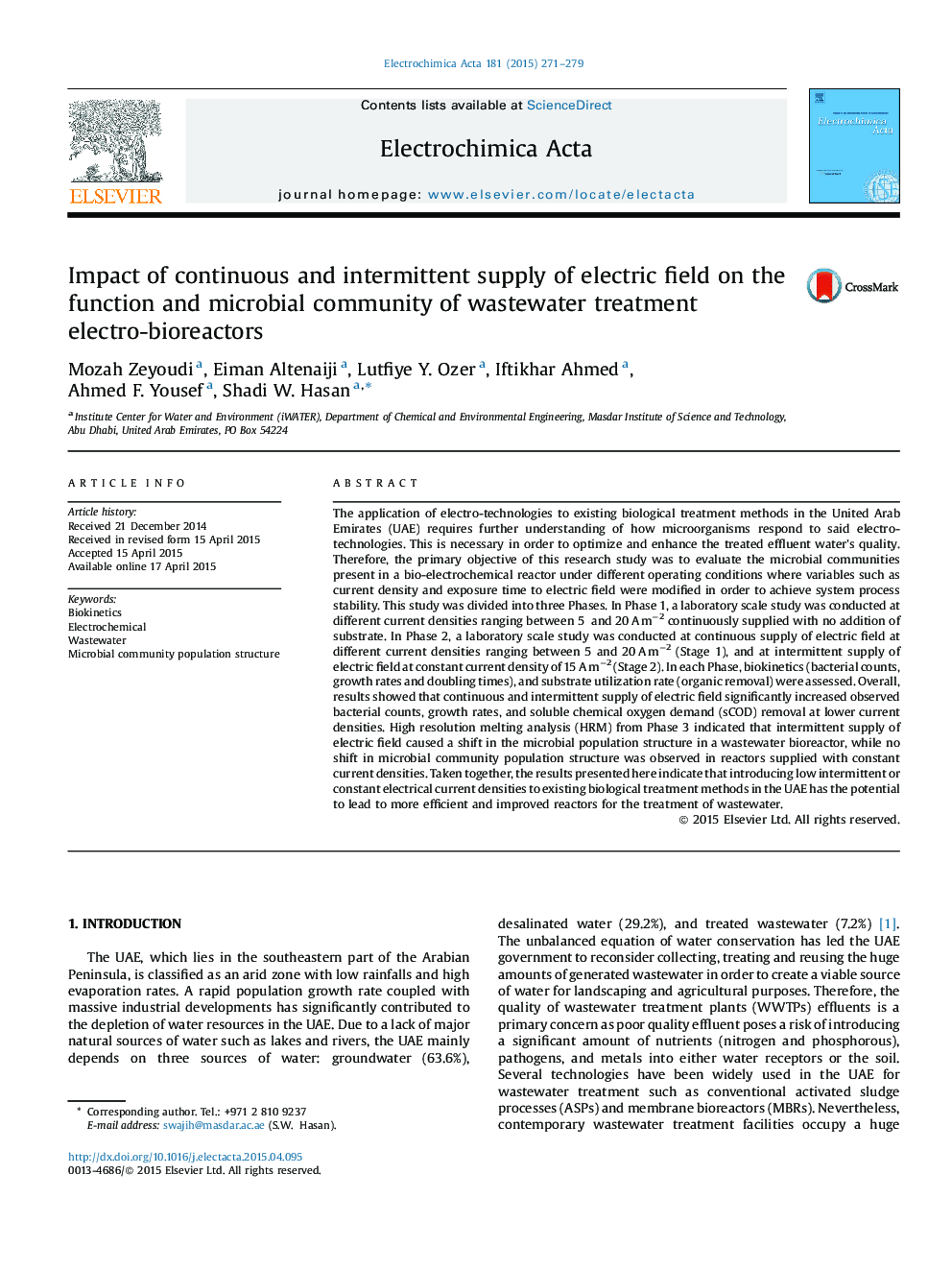| Article ID | Journal | Published Year | Pages | File Type |
|---|---|---|---|---|
| 183496 | Electrochimica Acta | 2015 | 9 Pages |
The application of electro-technologies to existing biological treatment methods in the United Arab Emirates (UAE) requires further understanding of how microorganisms respond to said electro-technologies. This is necessary in order to optimize and enhance the treated effluent water's quality. Therefore, the primary objective of this research study was to evaluate the microbial communities present in a bio-electrochemical reactor under different operating conditions where variables such as current density and exposure time to electric field were modified in order to achieve system process stability. This study was divided into three Phases. In Phase 1, a laboratory scale study was conducted at different current densities ranging between 5 and 20 A m−2 continuously supplied with no addition of substrate. In Phase 2, a laboratory scale study was conducted at continuous supply of electric field at different current densities ranging between 5 and 20 A m−2 (Stage 1), and at intermittent supply of electric field at constant current density of 15 A m−2 (Stage 2). In each Phase, biokinetics (bacterial counts, growth rates and doubling times), and substrate utilization rate (organic removal) were assessed. Overall, results showed that continuous and intermittent supply of electric field significantly increased observed bacterial counts, growth rates, and soluble chemical oxygen demand (sCOD) removal at lower current densities. High resolution melting analysis (HRM) from Phase 3 indicated that intermittent supply of electric field caused a shift in the microbial population structure in a wastewater bioreactor, while no shift in microbial community population structure was observed in reactors supplied with constant current densities. Taken together, the results presented here indicate that introducing low intermittent or constant electrical current densities to existing biological treatment methods in the UAE has the potential to lead to more efficient and improved reactors for the treatment of wastewater.
